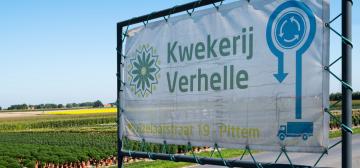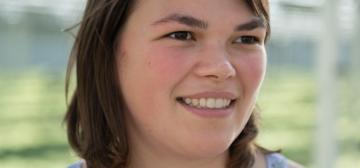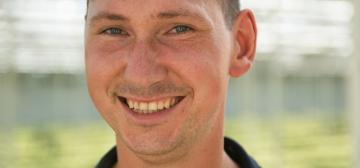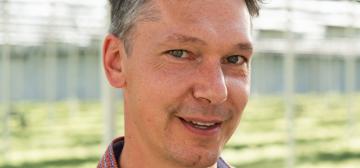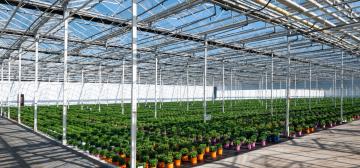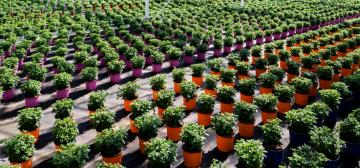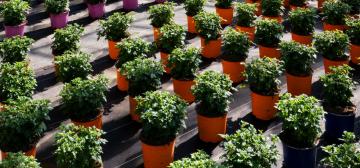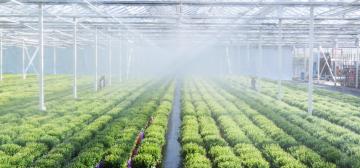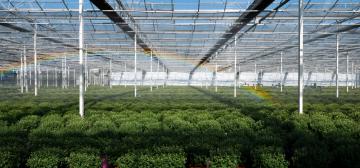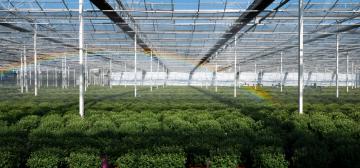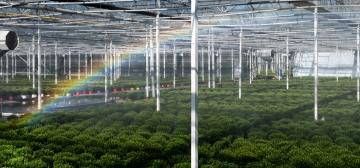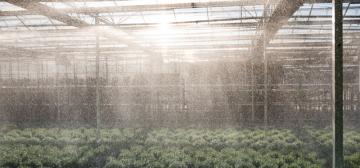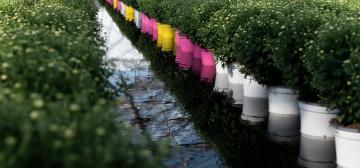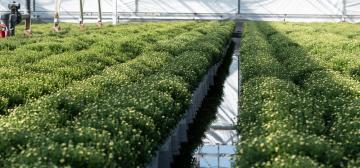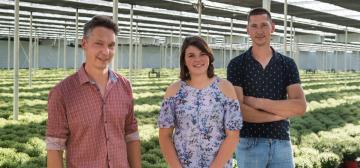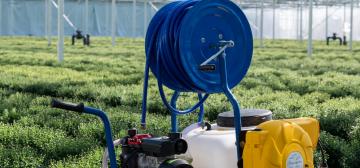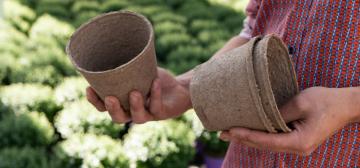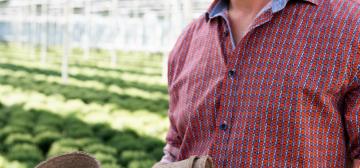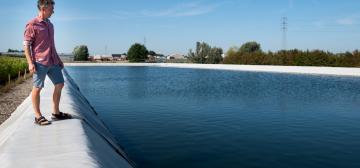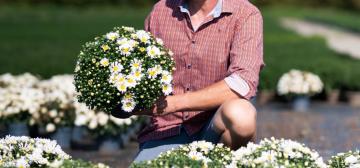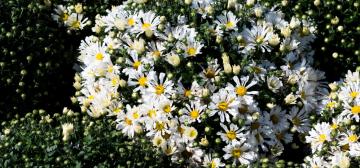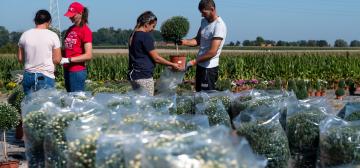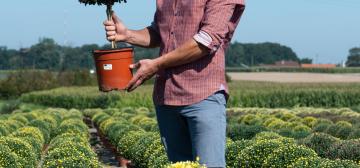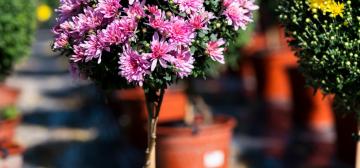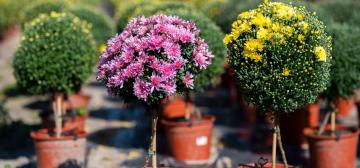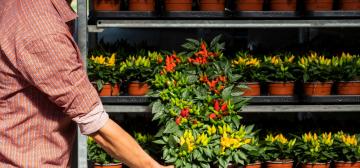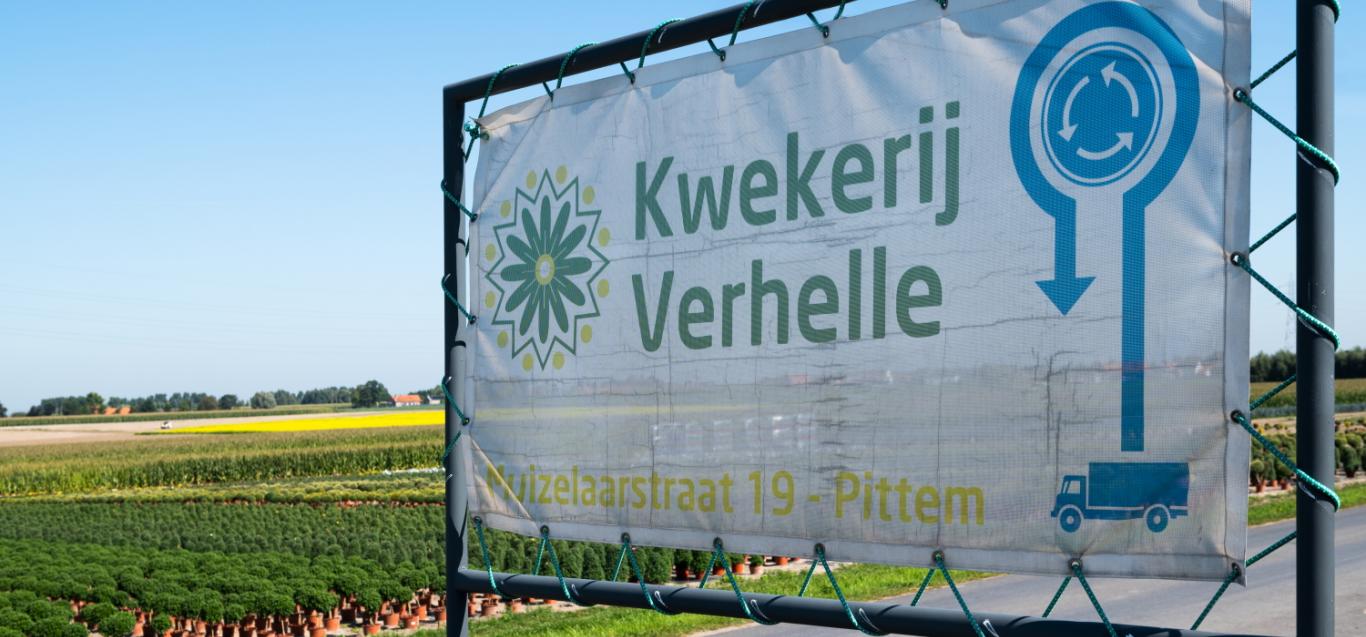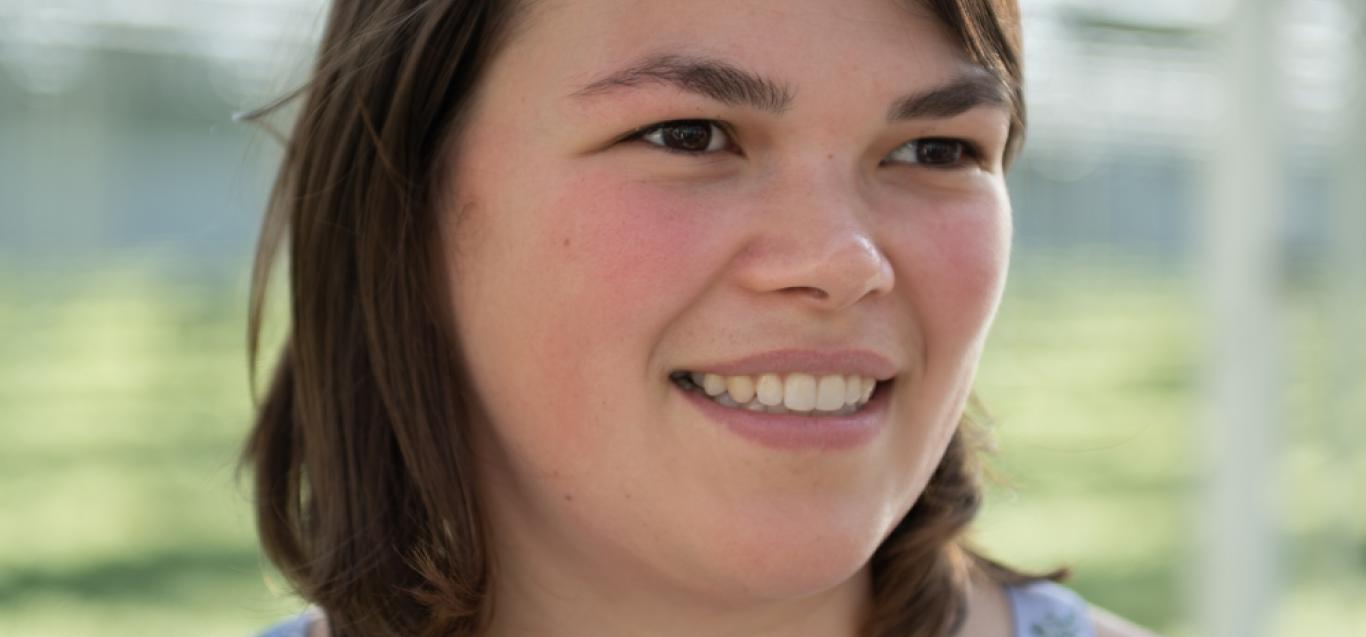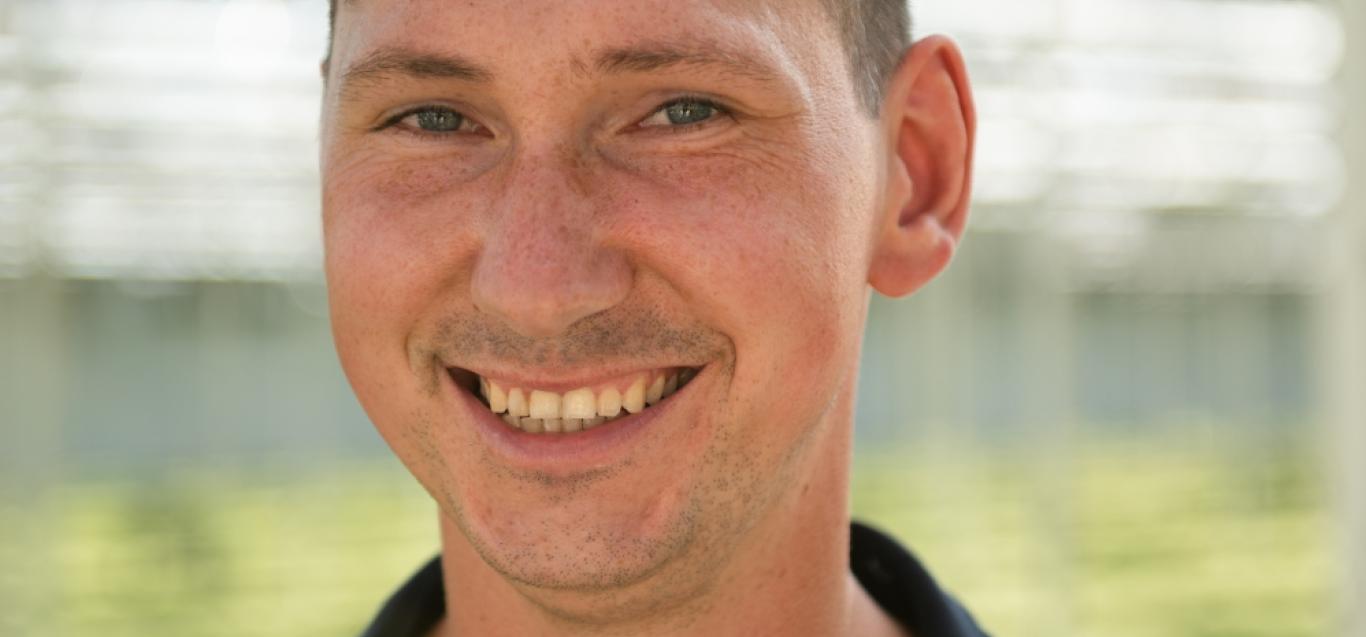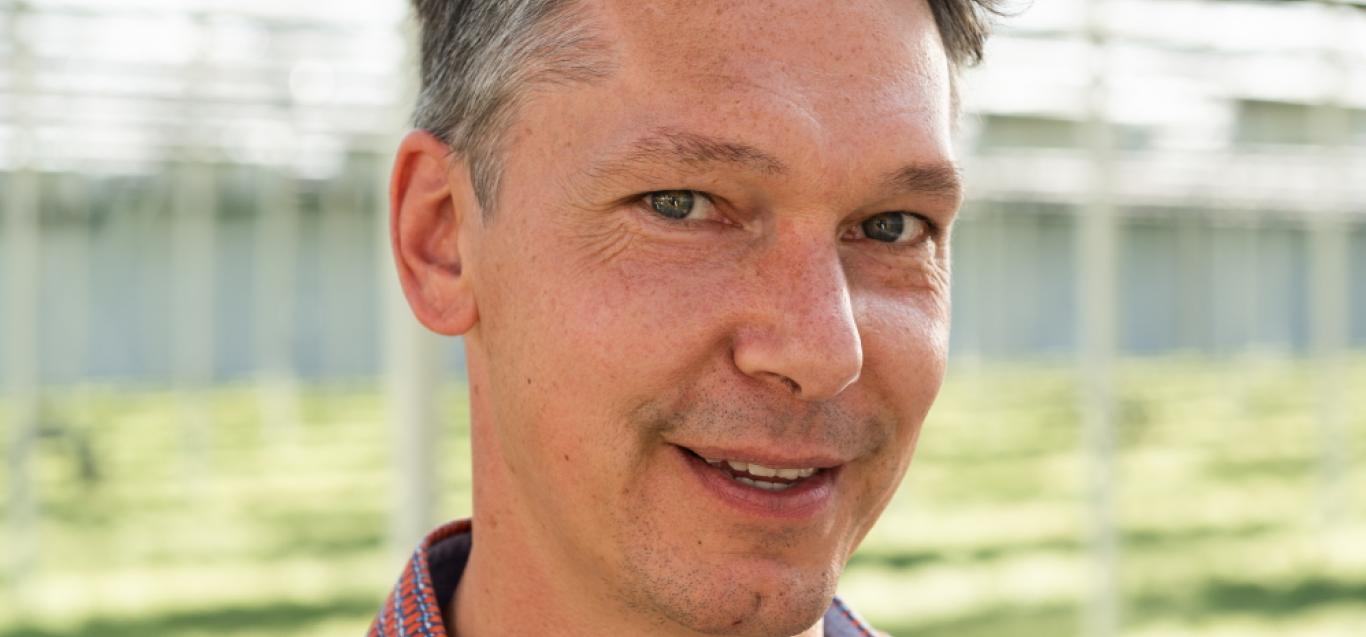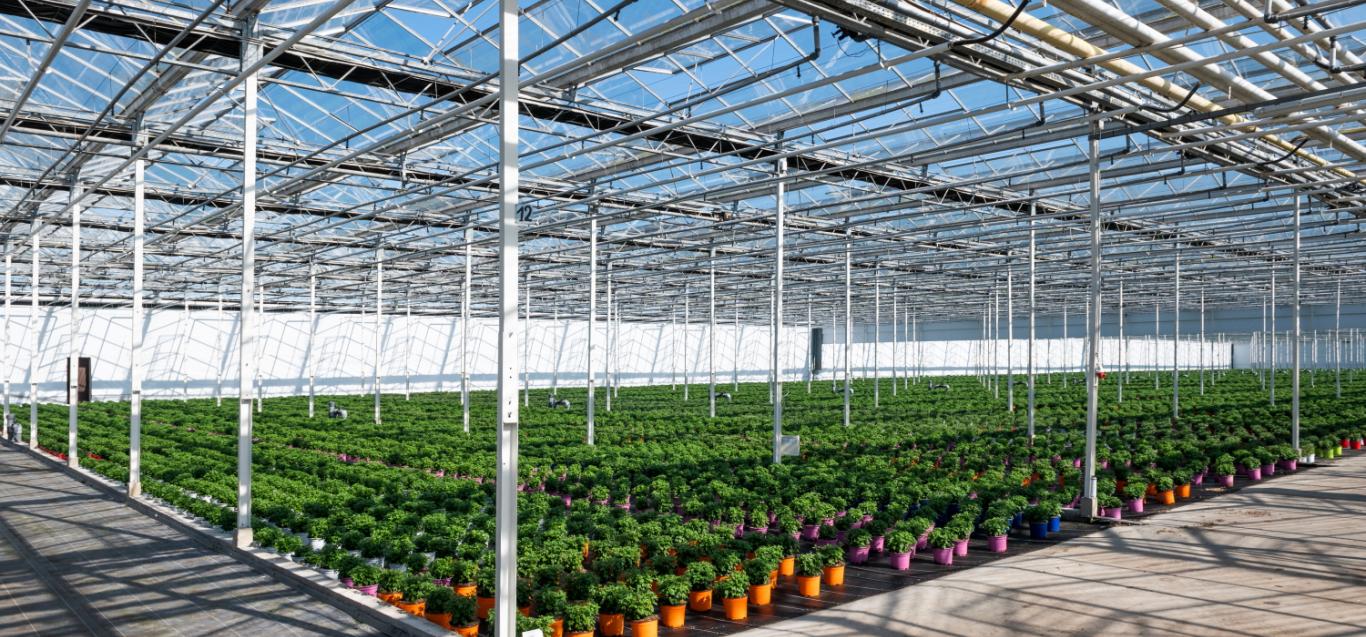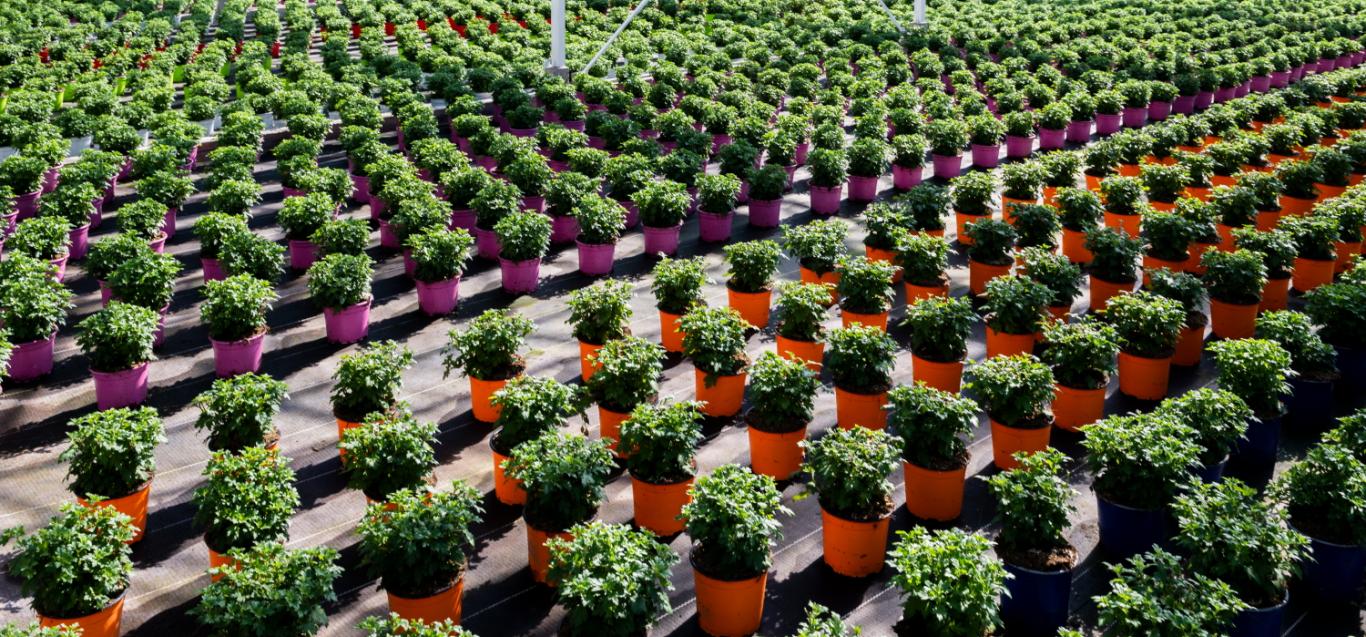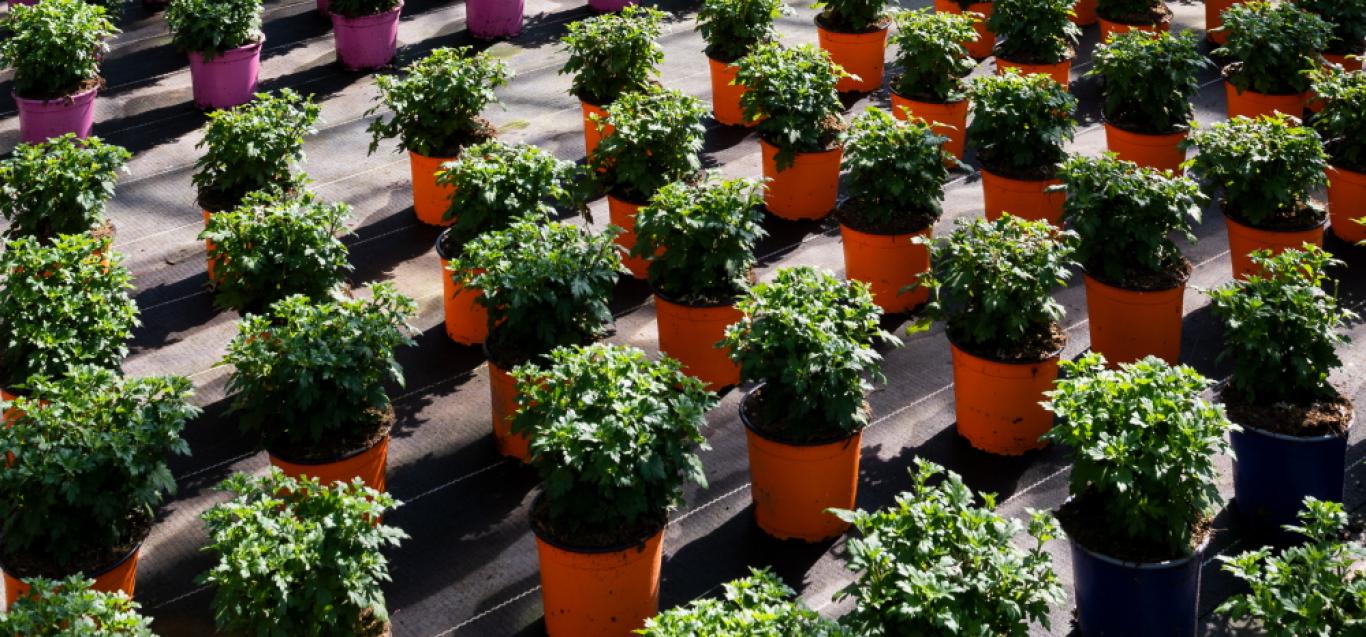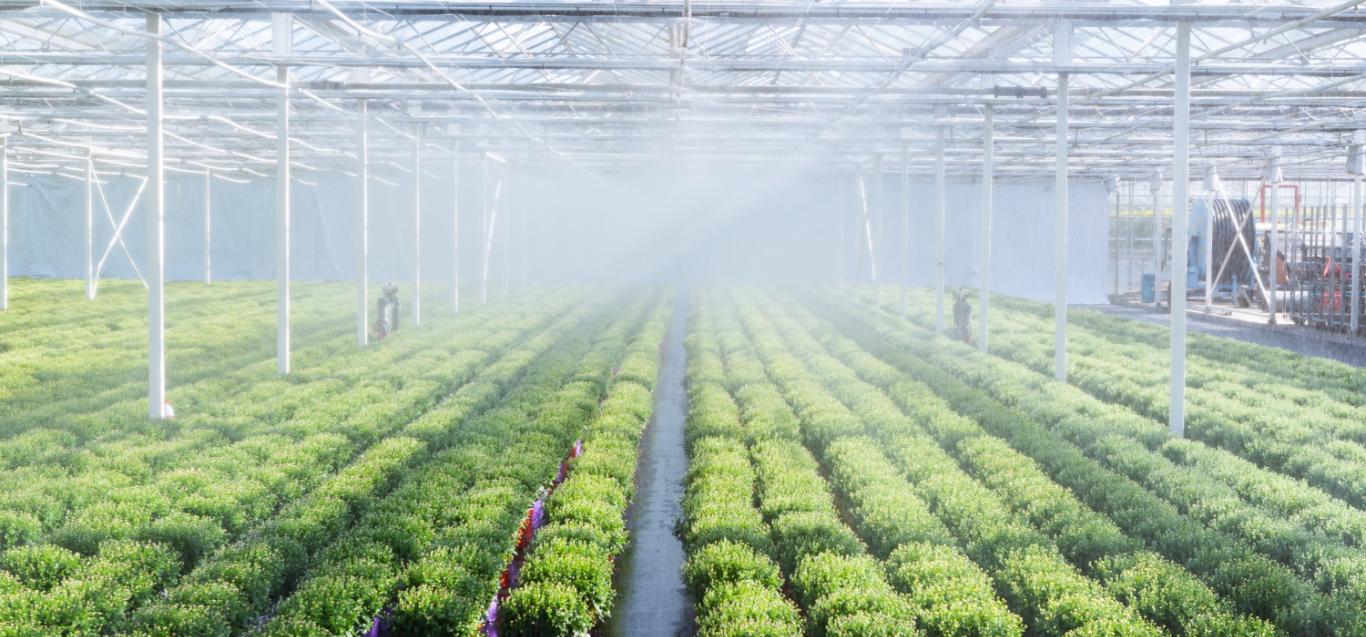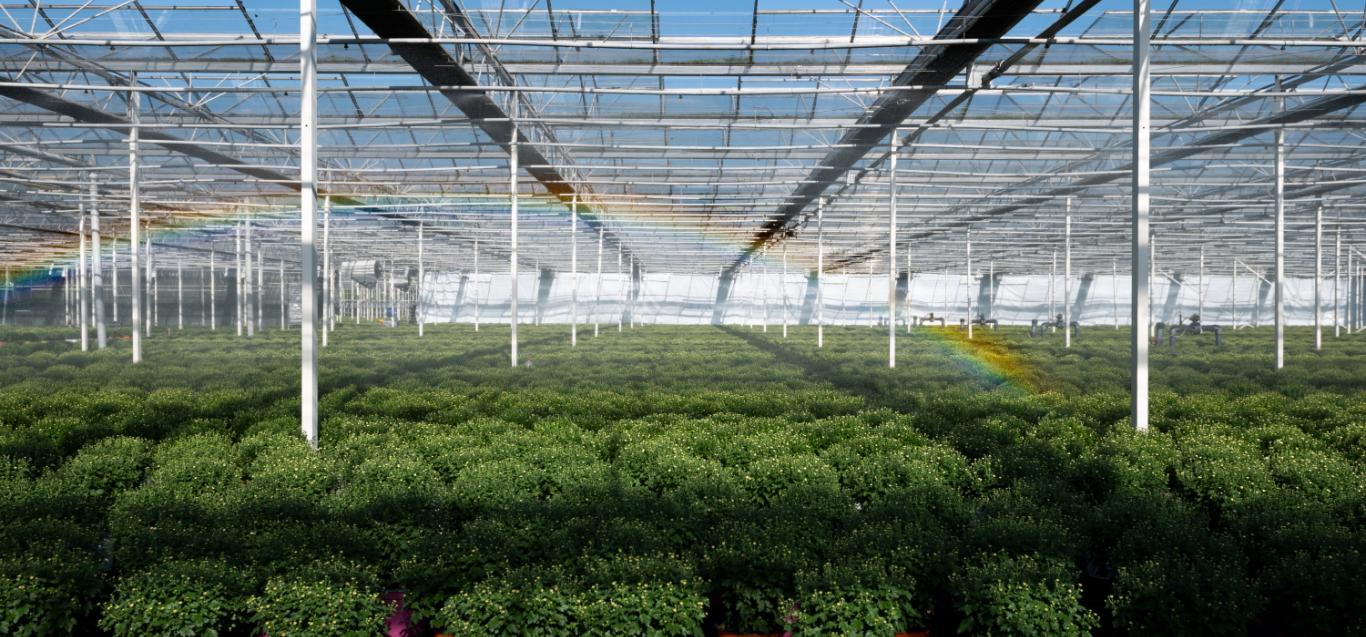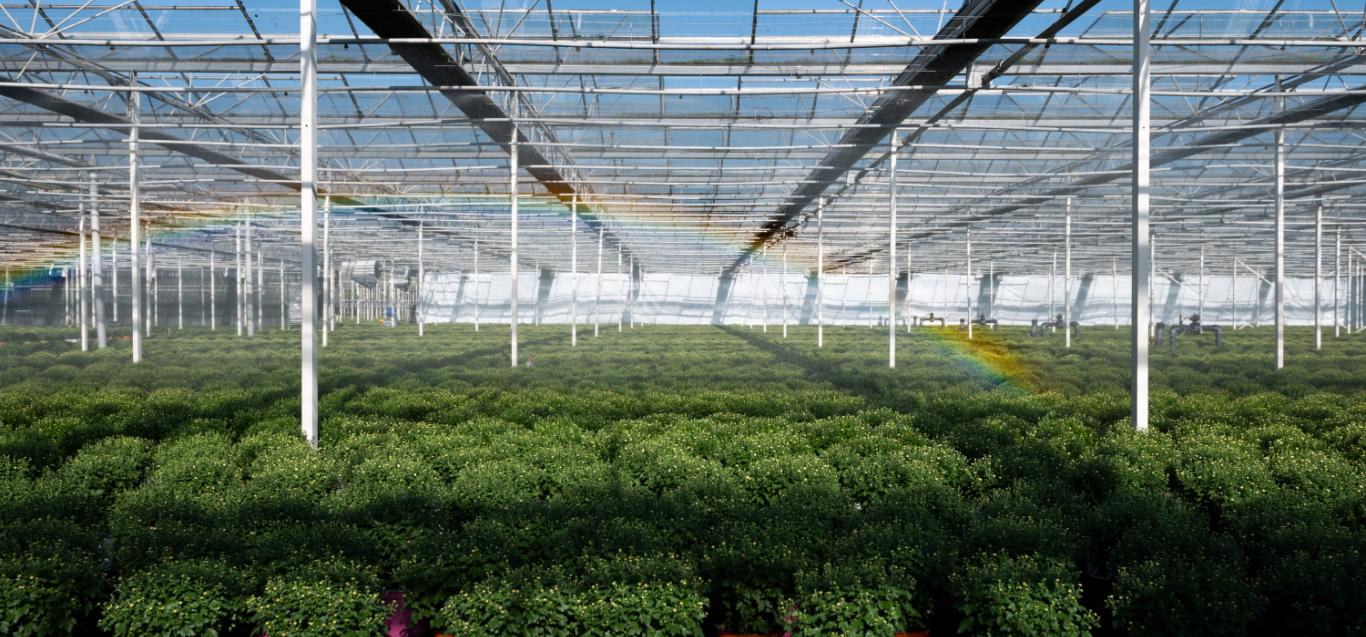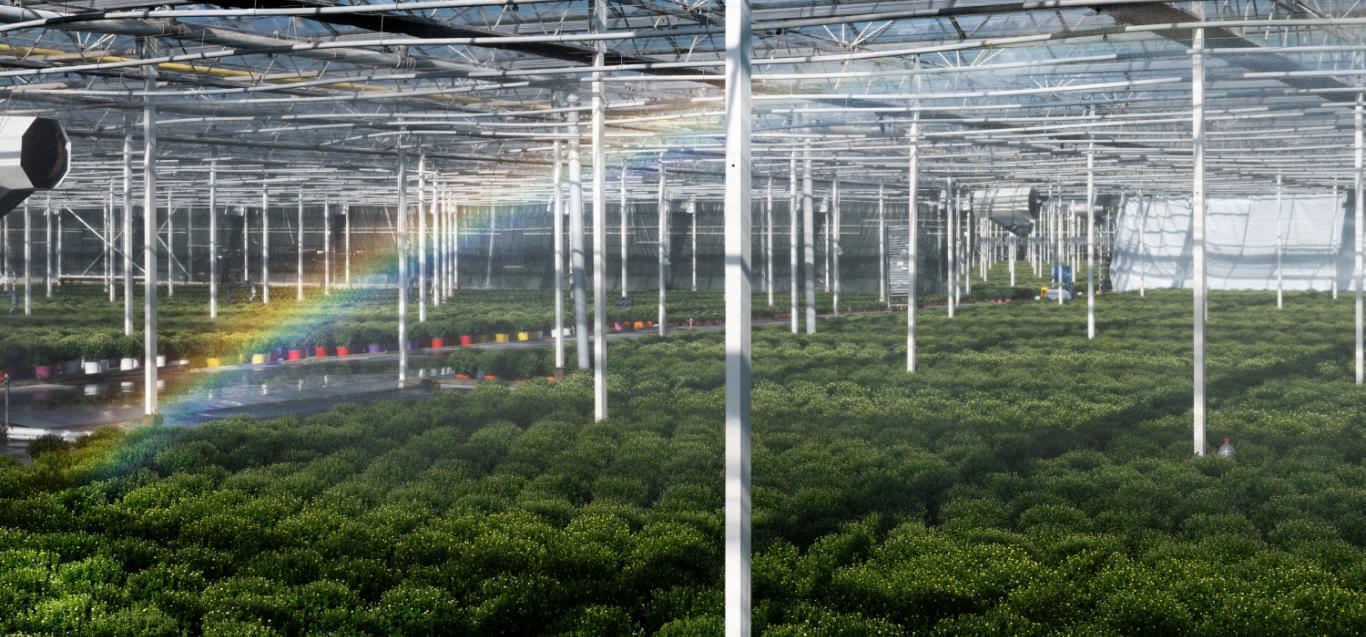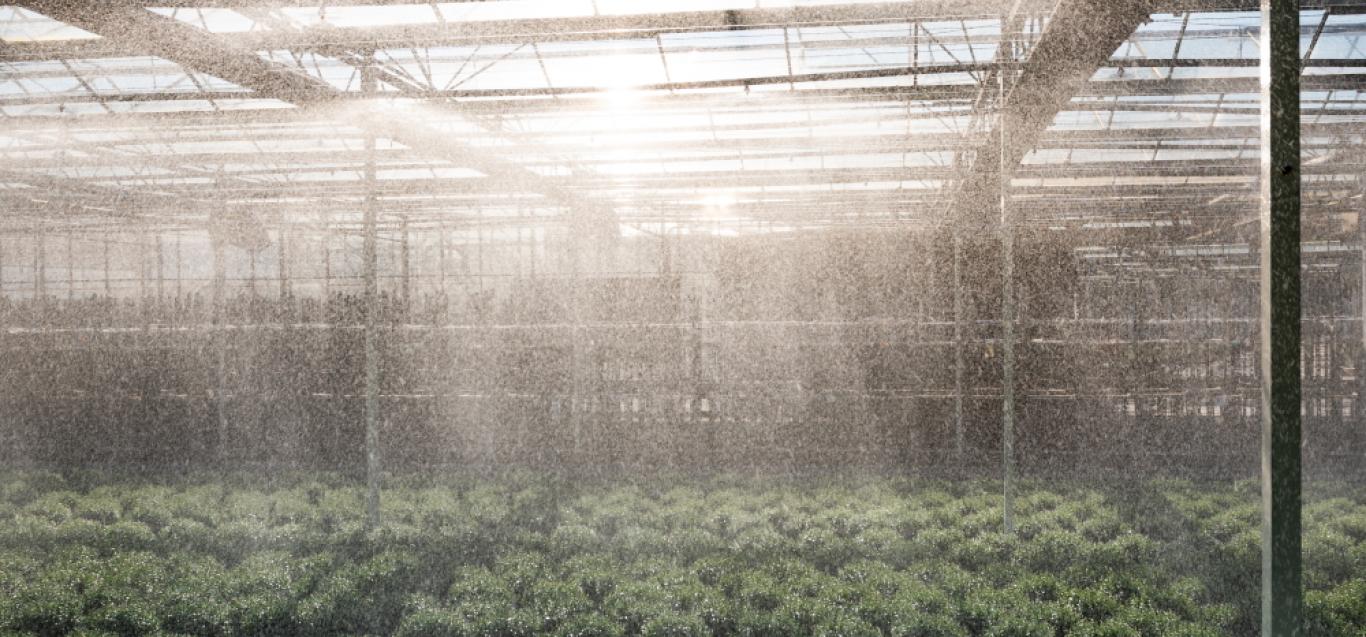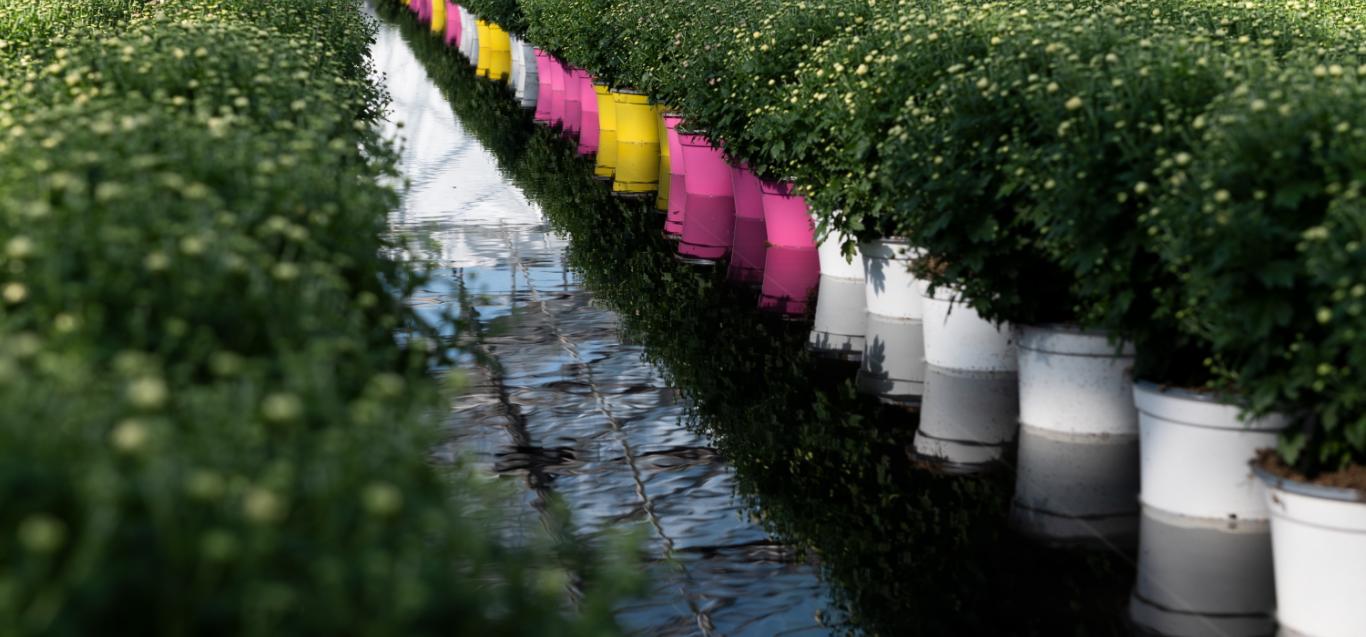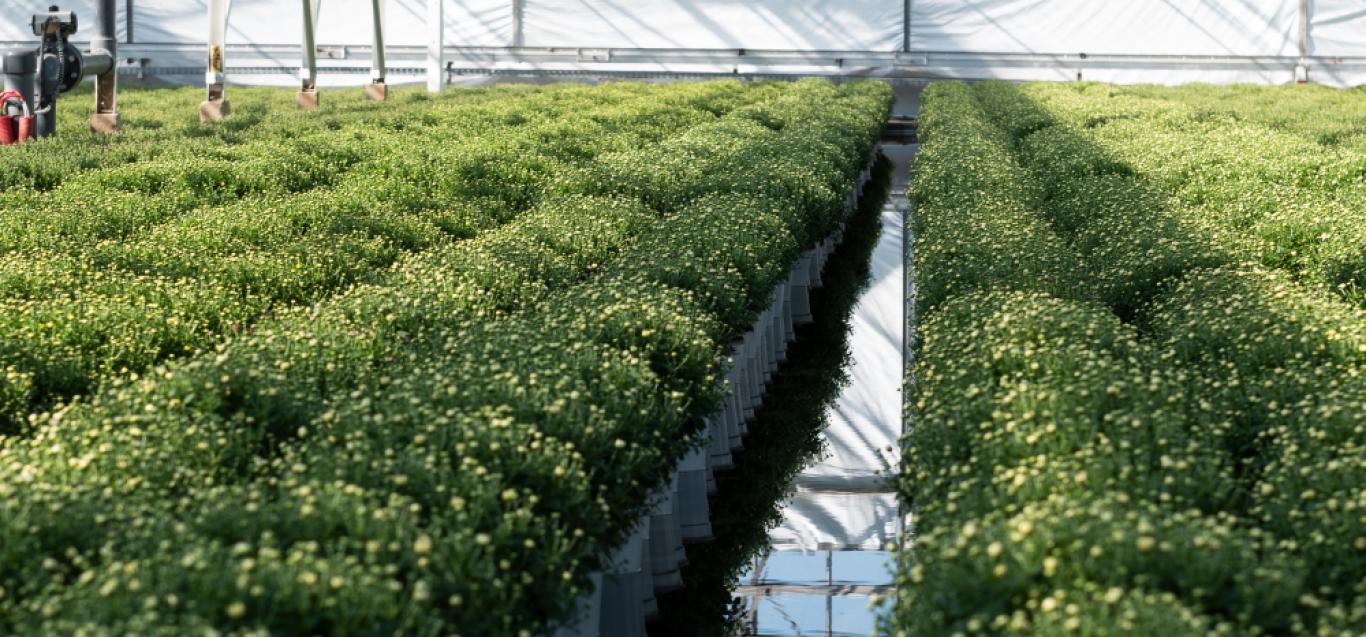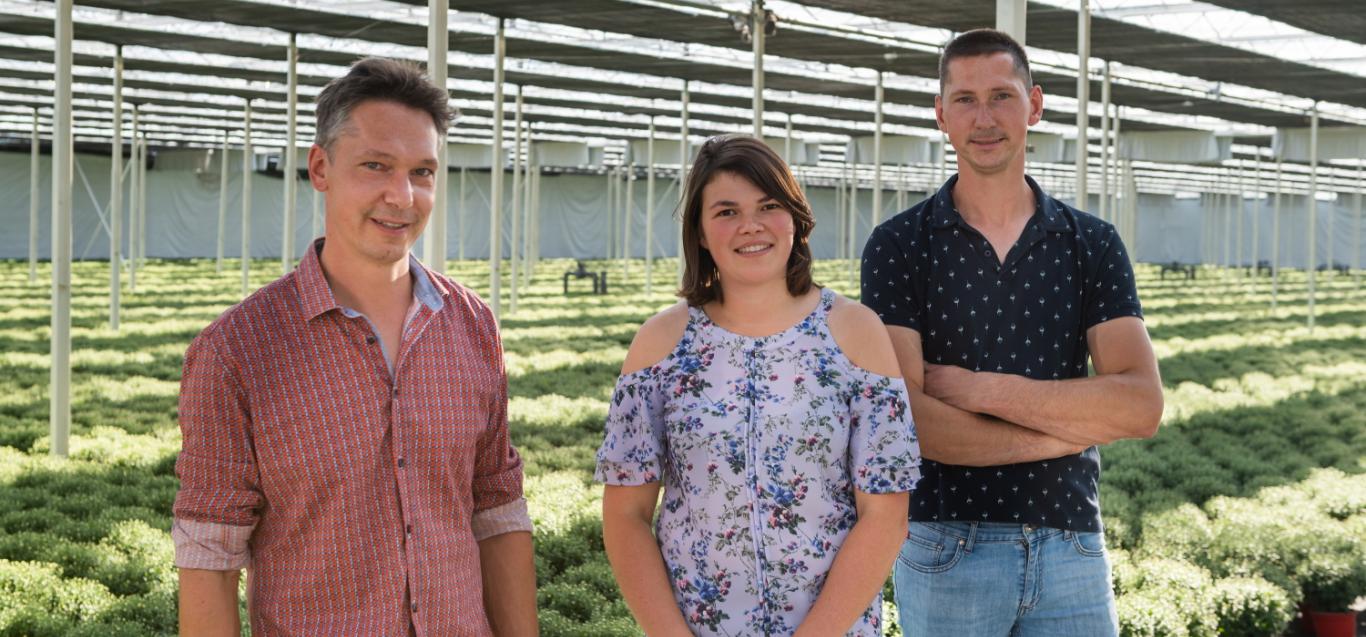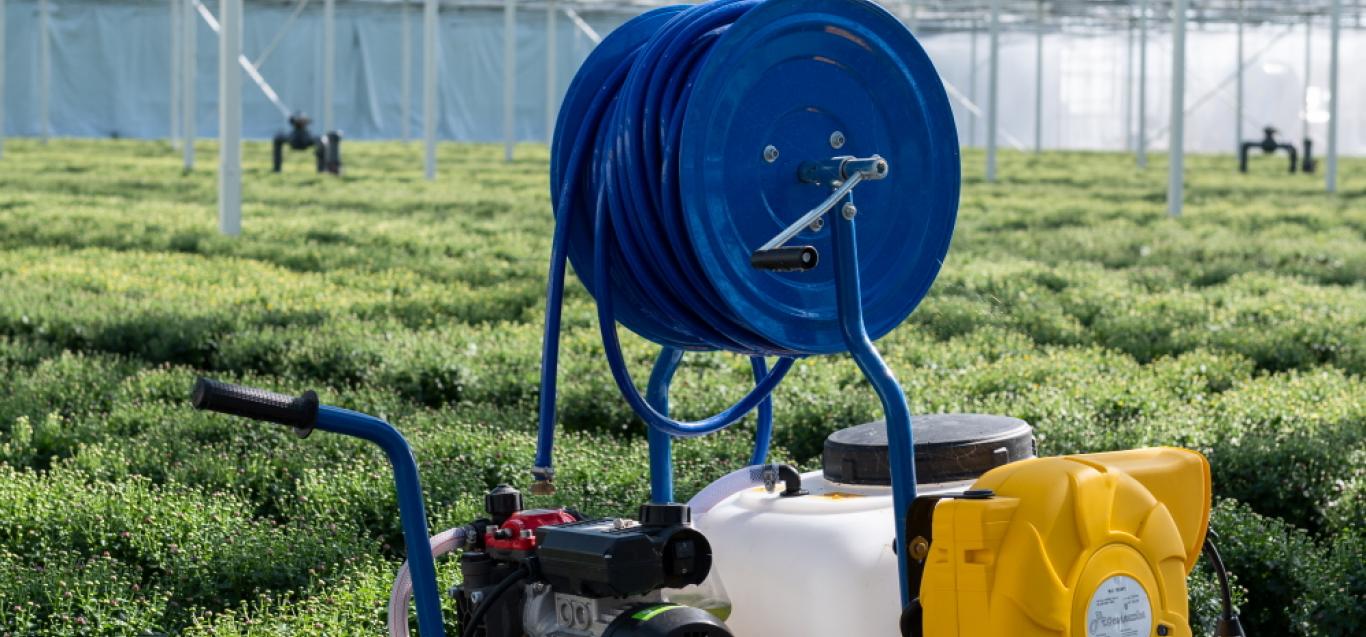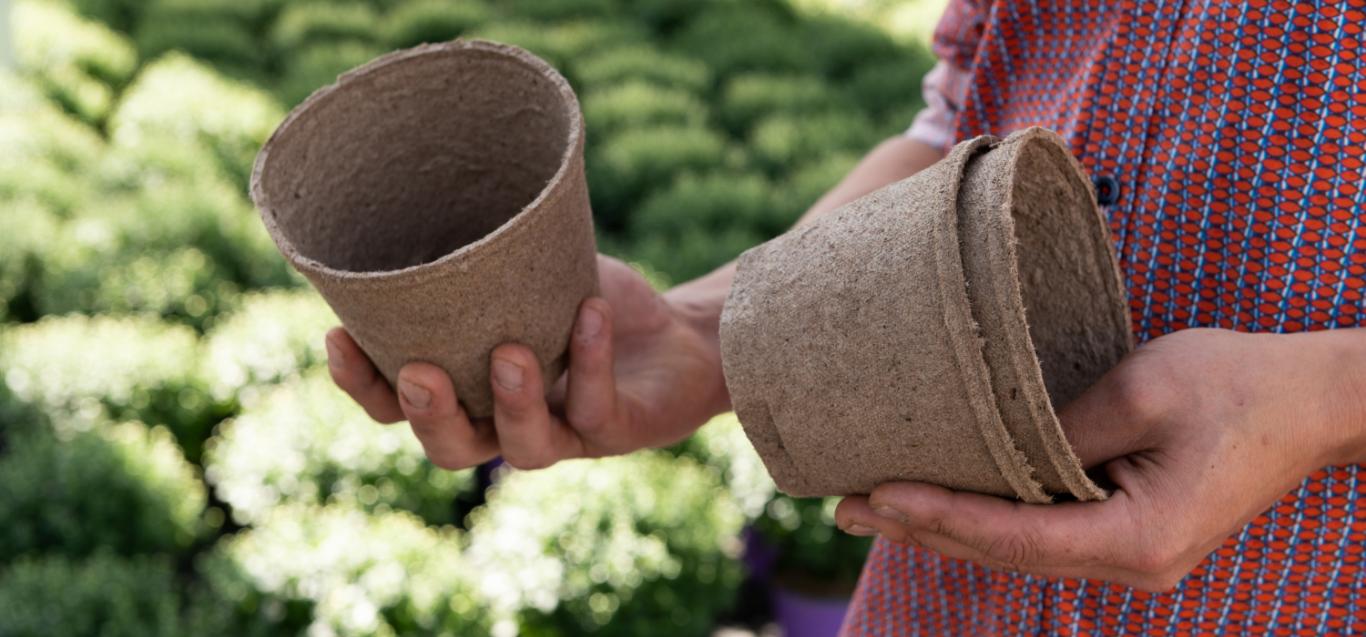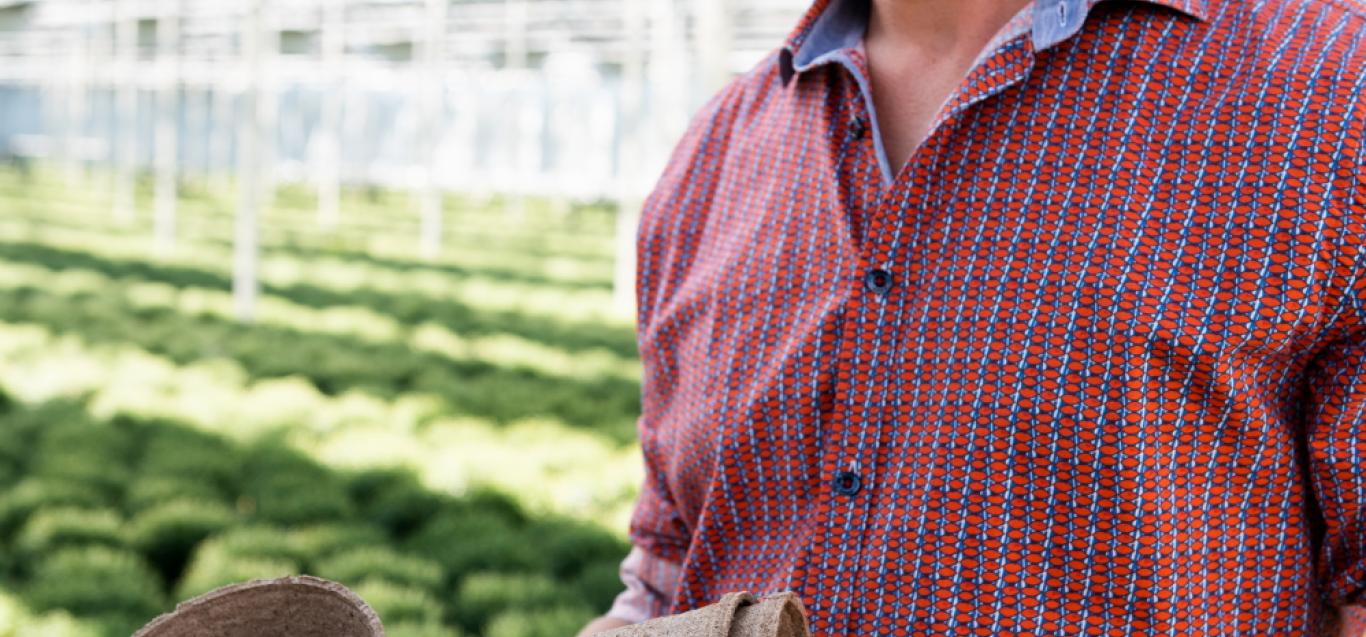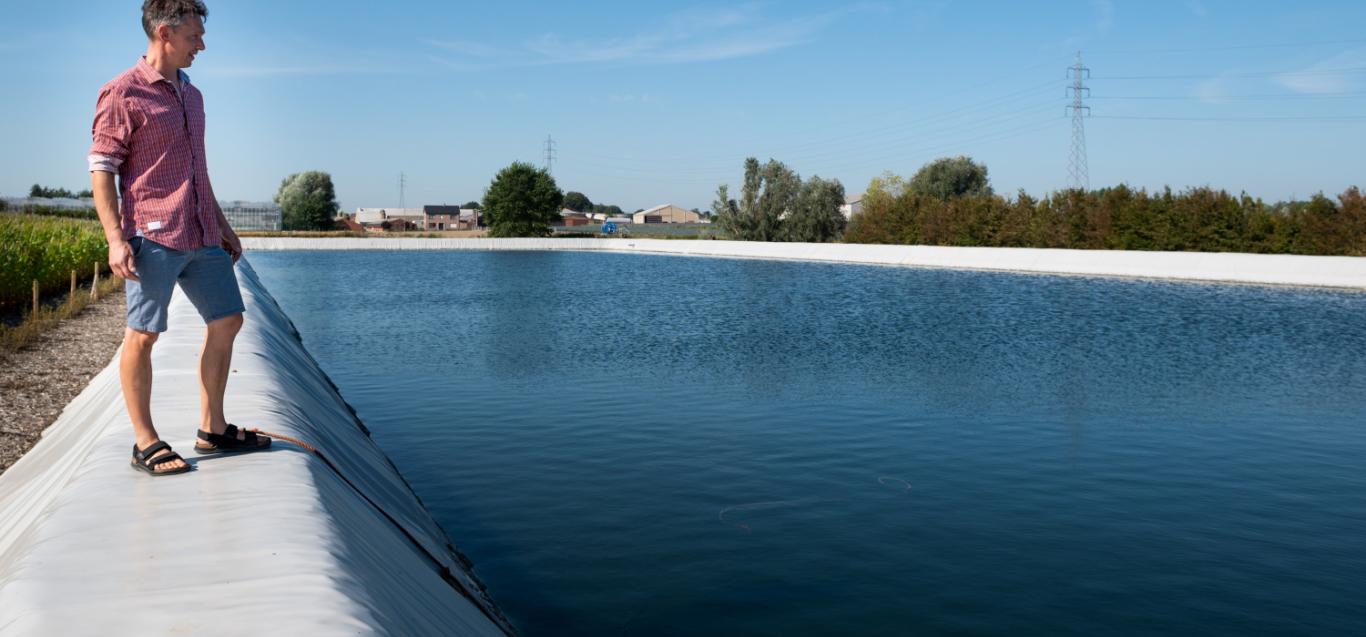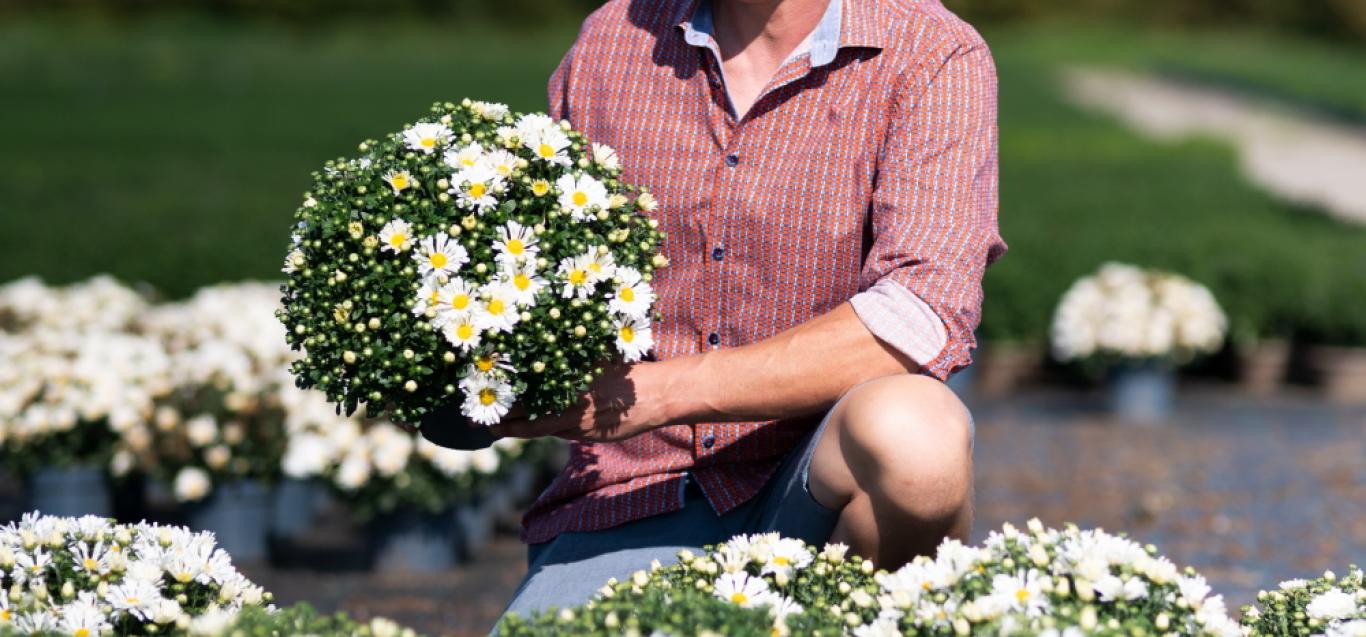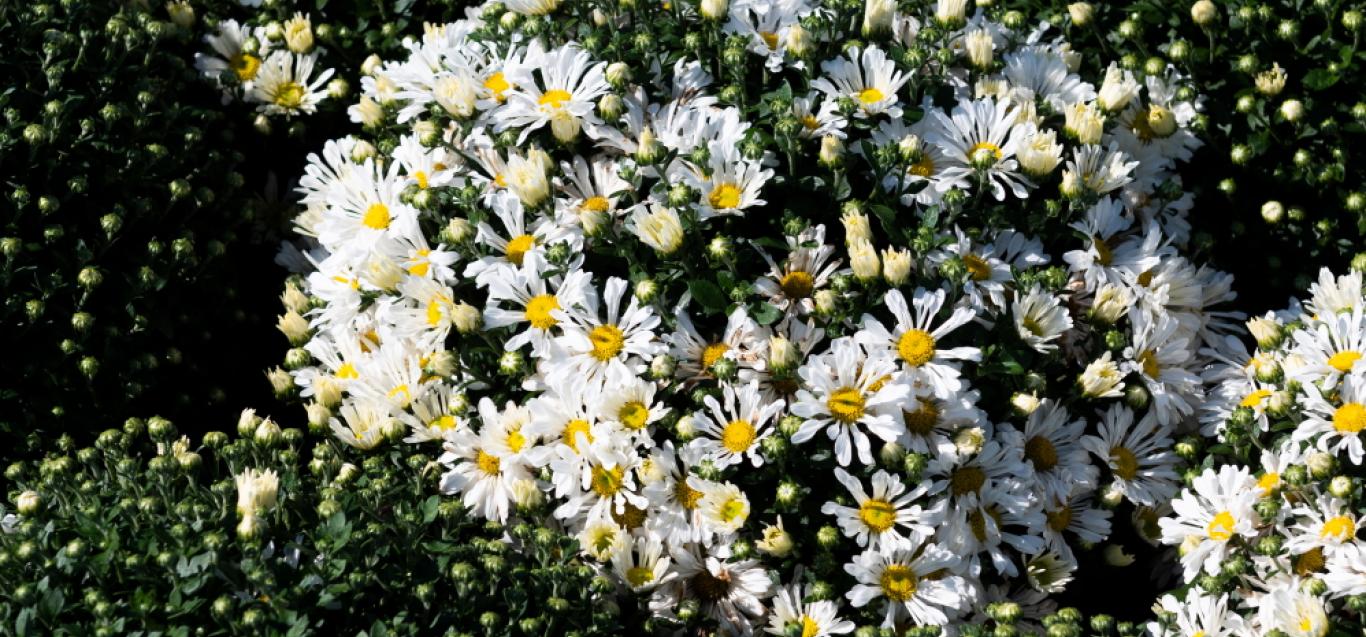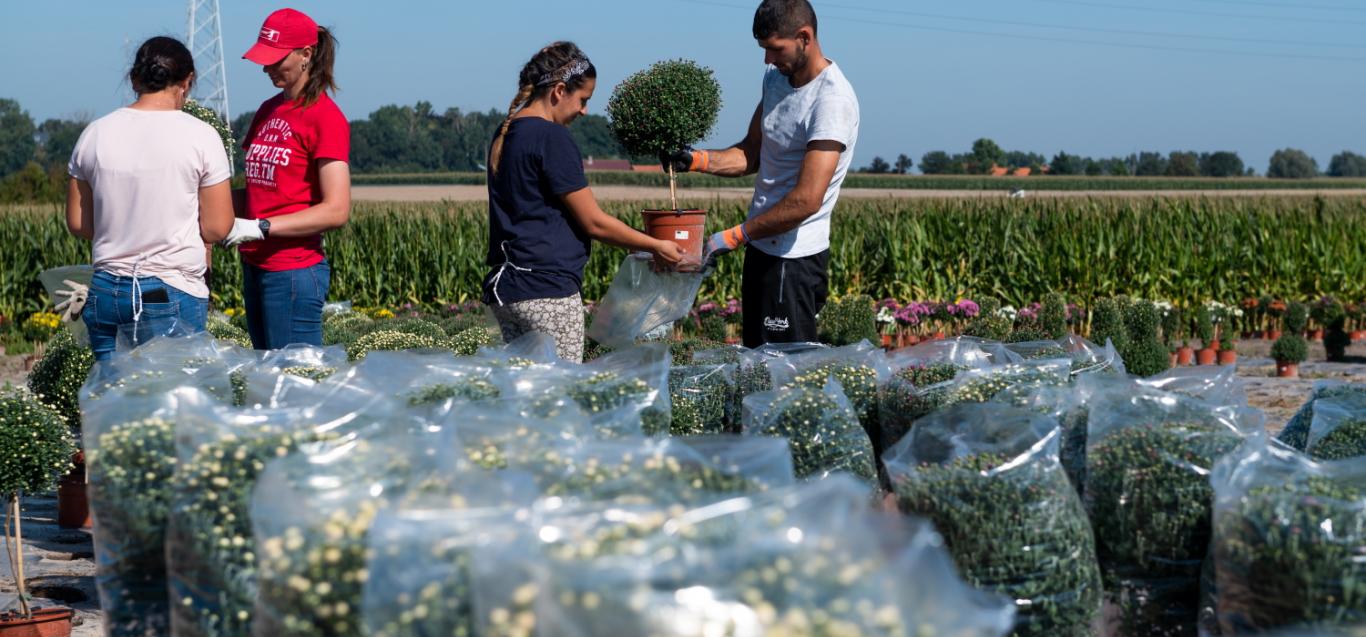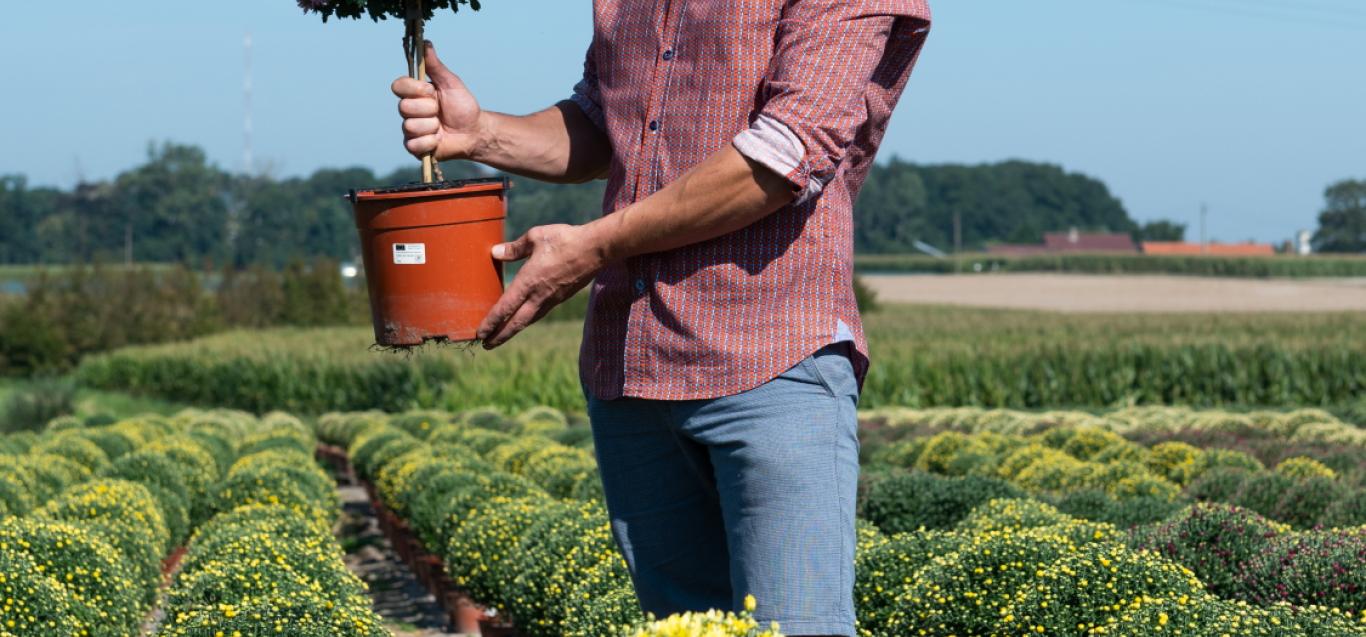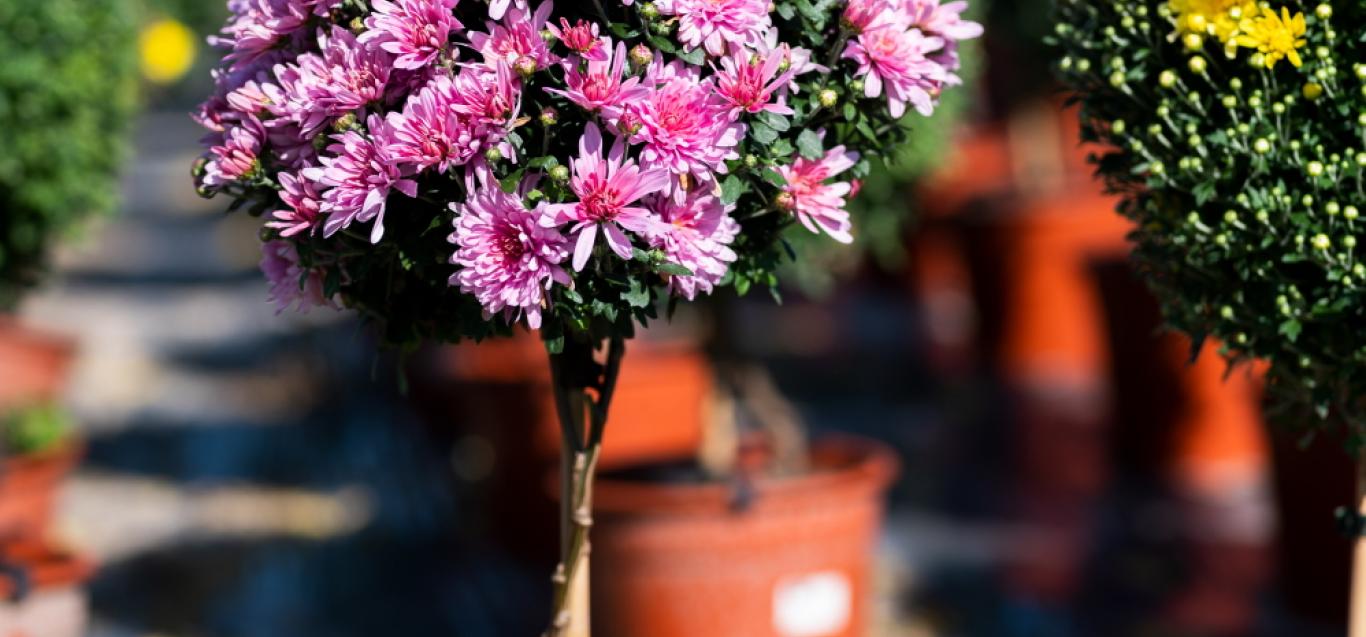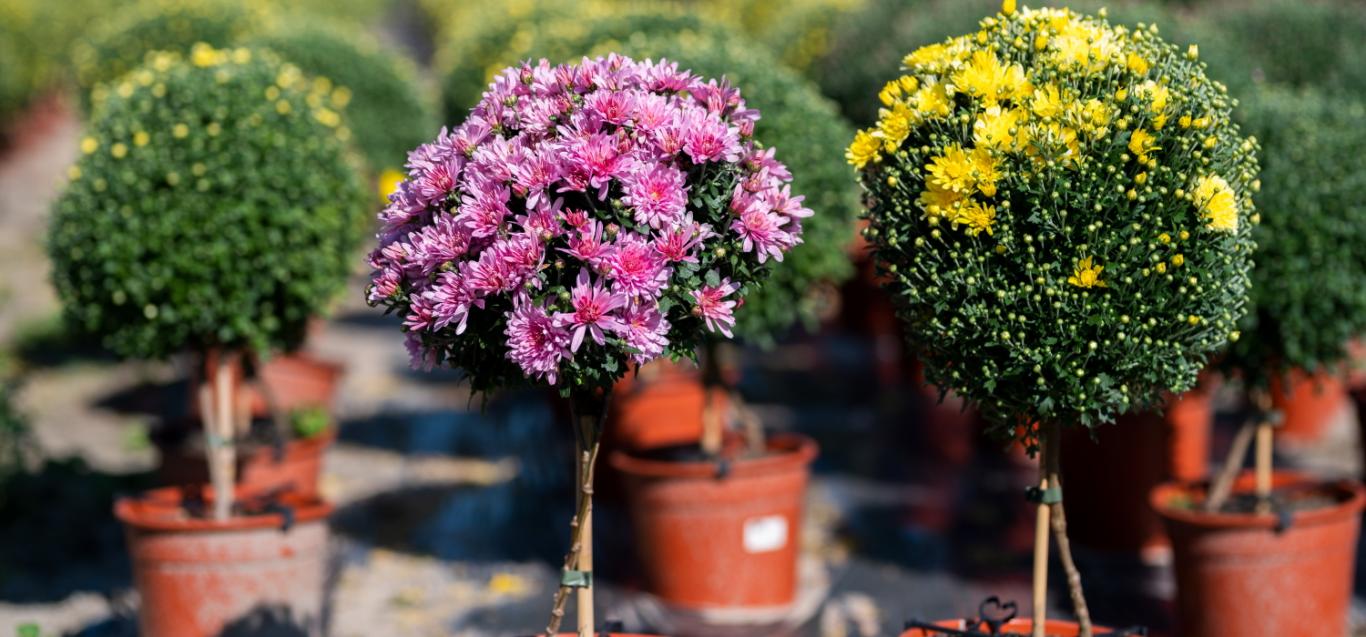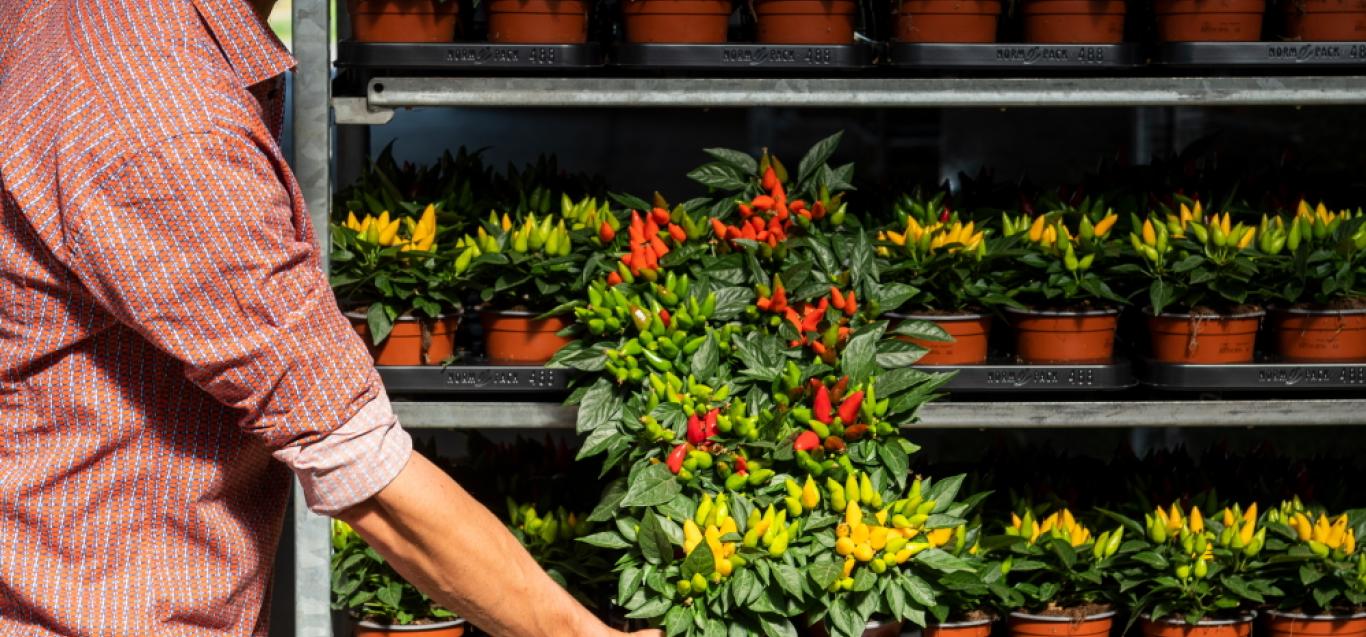Looking just that bit further
The category of annual pot and bedding plants is a capricious market that depends greatly on fashion trends and weather conditions. “We focus on plants that offer the consumer enjoyment for as long as possible, in our eyes that, too, is working towards sustainability,” says Steven Verhelle.
Verhelle BV in Pittem, West Flanders, specialises in flowering, annual, seasonal products, including Campanula, Capsicum, Solanum, daisies and chrysanthemums. Following a merger, the company is active at three production sites, which in total cover some 5.5 ha of greenhouses and 4 ha cultivation outside. “In the autumn we have chrysanthemums in every shape and size. But we aid for a wide range of products in order to better spread the work pressure over the seasons,” says Steven Verhelle (37) who is the commercial director. He leads the company together with his brother Simon (28) and his sister-in-law Julie (25). Simon is the cultivation director. Julie takes care of all the administration, certification, orders and personnel. On average the trio is assisted by half a dozen seasonal workers.
Long flowering
Autumn is largely characterised by chrysanthemums. Which is not an easy market. But the long flowering period makes it an attractive plant for consumers. “We are not in favour of throwing things away. We like plants that flower for a very long time that the consumer can enjoy for a very long time. For us, that is an essential part of sustainability.” The company actively looks for types and varieties that can offer added value in this way. For example, it exclusively launched the Summer Daisy, a chrysanthemum that is reminiscent of a daisy (argyranthemum) and flowers for a very long time. “It’s also a plant that’s a little wilder. Growers often assume that consumers prefer a plant that is ‘plastic perfect’, but that isn’t the case,” Steven says with conviction.
Water where it's needed
In the greenhouses, almost all the plants are watered using an ebb and flow system, with mainly lava in the soil. Since the water draining away sinks though the bottom, the coarse dirt is quickly removed from the water. All the water is collected and reused. Treatment with hydrogen peroxide guarantees the water quality. Until recently, part of the rainwater could not be collected in winter. That changed with the installation of a 15-million litre water basin. And this makes the company self-sufficient with regard to water. Steven is a convinced fan of the ebb and flow system. “Each plant gets the same amount of water, and the water goes where it’s needed. And this prevents mould from forming.”
Plant strengtheners
A drier crop may be more susceptible to spider mite, but the company is faced with that relatively little. The use of chemical crop protection products is limited by using biological alternatives, but also by using plant strengtheners. These thicken the leaves which in turn makes the plant more resistant. For the daisies, amongst others a product is used that adds magnesium. “We don’t just use any product. We first test a product on a smaller batch with a knapsack sprayer. Sometimes we don’t see the effect until we stop the treatment and sometimes there is no effect at all. Also, the effect may vary from one crop to the next, but in any case we’ve had good experiences with the daisies.” Simon Verhelle explains.
Biological controllers
Where possible, the use of products is reduced. Growth regulation of Capsicum (ornamental pepper) is avoided by cultivating in dry conditions. Capsicum is also a plant for which Verhelle consistently uses Amblyseius swirskii kissing bugs against thrips. So biological controllers are certainly possible in conventional horticulture, although it will always be a question of nuances. “Naturally, the biological controller has to feel at home in a crop, but it also has to have enough time to reproduce. Which is not self-evident for all crops. The ‘Swirskii’ is a little bug that customers don’t notice. The moults aren’t noticeable either. Which makes it possible to still deliver a perfect plant and that’s an important advantage.”
Demand from European retailers
Plastic pots are still the norm in horticulture, but even that norm is not untouchable. The so-called ‘carbon black’ pots fell out of favour a few years ago since they are difficult to recycle. Since then, the focus on recyclable pots has continued to grow. This is the norm too at Verhelle now. “We may have been at the forefront in this, but that’s also because 60% of what we grow is destined for export. Depending on the crop, our exports go mainly to Scandinavia, Germany, the Netherlands, United Kingdom and France. That includes quite a few retailers, and they were the first to demand stricter requirements for recyclability. So we soon decided to make the transition for all the plants at the company. Growers who deliver to local garden centres might feel that pressure a bit less.”
Biodegradable pots
Are biodegradable pots that can be planted in the ground along with the pot the future? In any case Steven Verhelle wants to acquire experience in this. In the spring, within the context of a campaign for Think Pink, the national breast cancer campaign in Belgium, the company cultivated a batch of Helianthus (sunflower) directly in compostable, biodegradable pots. Handling of the pot and plant combo went well, although the forklift trucks that transport the plants to and from the conveyor belts had to be adapted a little so that the plants did not fall on the ground. But growing plants in compostable pots goes further than that. For the campaign the links of the chain joined forces: the young plant supplier, pot supplier and supplier of the organic fertilizers looked at what could be optimised.
Verhelle bv is part of The Green Community, a cooperative company made up of a number of growers whose mission is to grow in a sustainable way. As little use as possible of plastic and chemicals and fair and transparent prices form the basis for this. The use of biodegradable pots is part of the goal of placing as little burden as possible on man, the environment and surroundings.
Cooperation and consultation
Steven strongly believes in cooperation and consultation, especially with the buyers. “60 to 70% of what we grow is sold beforehand. Which is necessary, because the flowering plant segment is sold just before flowering, even for long-flowering plants. We also like to evaluate together with the client: why did something sell or not. Would it be better with another pot or at another time of year. That’s a completely different way of operating than growing things that others also grow where only the price is the deciding factor. We want to create security for ourselves and avoid situations where we have to push something onto the market at dumped prices because we have to get rid of it.”
The strategic choice of opting for flowering plants with an above-average flowering period fits in this approach. “If something has a longer life at the client’s, the same applies at our company. That offers us and our client space. That, too, is sustainability.”
Verhelle bv in figures
Employees
- 3 managers
- 6 occasional workers
Company surface area
- 5,5 ha unheated green houses
- 4 ha terrain outside
Export: 75% of the turnover
- The Netherlands: 45%
- France: 8%
- Germany: 15%
- Other EU-countries 7%
Most important export products
Primula, Bellis, Viola, Myosotis, Campanula, Argyranthemum, capsicum, aster, chrysanthemum
